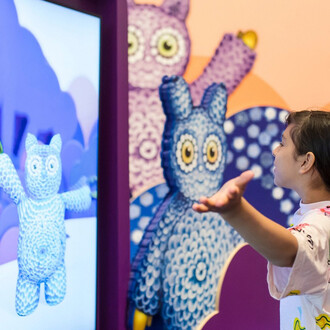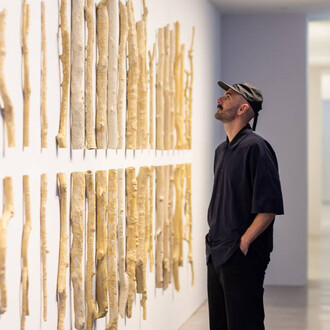The Ouroboros will become a beacon. Daytime or nighttime, it's going to pulse with light and energy.
(Lindy Lee)
Ouroboros is an immersive public sculpture by Australian artist Lindy Lee installed in the National Sculpture Garden.
With a practice spanning more than four decades, Meanjin/Brisbane-born Lee uses her work to explore her Chinese ancestry through Taoism and Ch’an (Zen) Buddhism — philosophies that see humanity and nature as inextricably linked.
Ouroboros is based on the ancient image of a snake eating its own tail; an image seen across cultures and millennia, the symbol of eternal return, of cycles of birth, death and renewal. Through its location at the entrance of the National Gallery, visitors are able enter the ‘mouth’ of the sculpture and walk into the curved space to experience darkness that is illuminated by light beams emanating from the thousands of perforations on its surface.
During the day its highly polished mirrored surface reflects the imagery of the floating world, the transience of passers-by, cars, birds in flight and passing clouds. At night the Ouroboros is lit internally, returning its light to the world.
Ouroboros measures around four metres high and weighs approximately 13 tonnes. The sculpture also incorporates recycled materials, maximising renewable energy and measures to minimise its carbon impact, making it one of Australia's first sustainable works of public art.
Lindy Lee’s Ouroboros was commissioned to celebrate the National Gallery’s 40th anniversary in 2022 and was completed in October 2024.
















